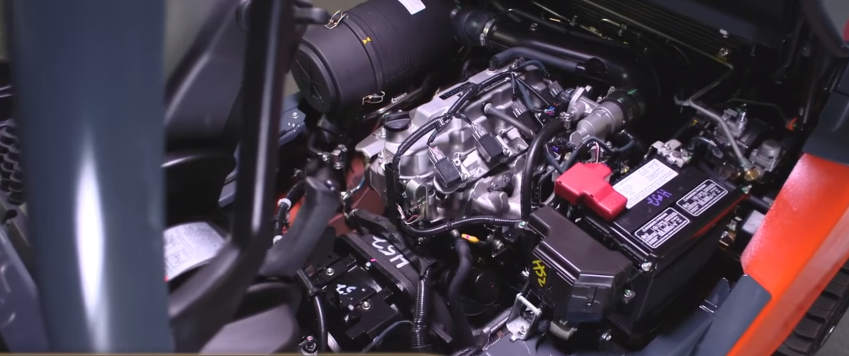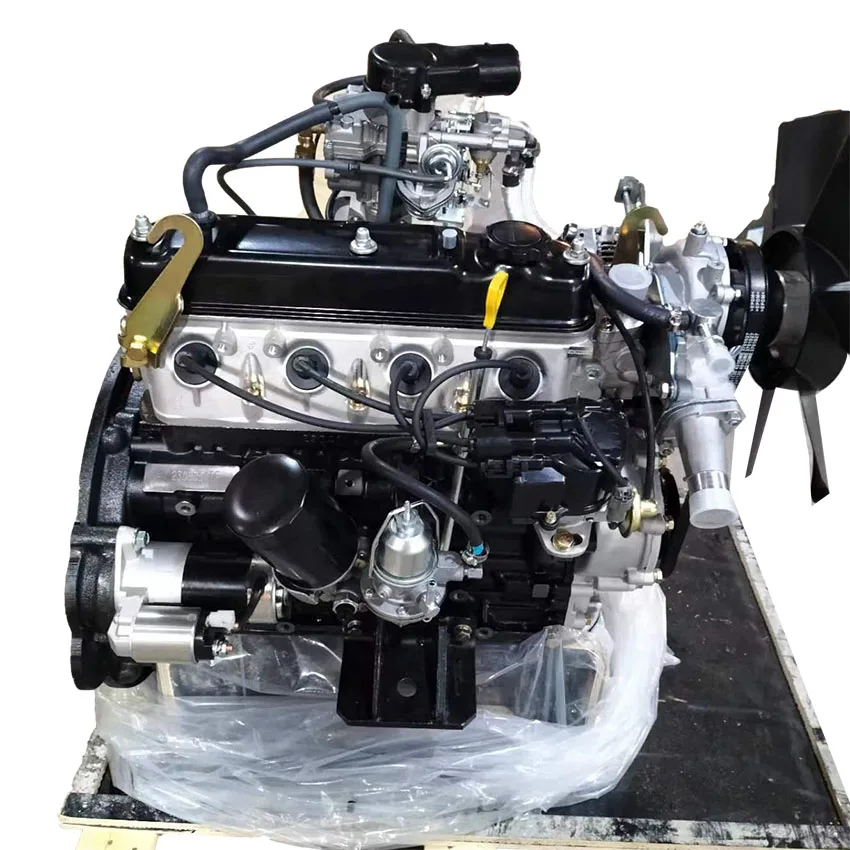The Role of the 4Y Engine in the Automotive Industry’s Evolution
The Role of the 4Y Engine in the Automotive Industry’s Evolution
Blog Article
Discovering the Various Types of Engine: Which One Fits Your Needs?
Inner burning engines continue to control due to their reliability, while electrical engines are getting grip for their sustainability. Crossbreed engines provide a flexible concession, and diesel engines stand out for their power in requiring applications.

Inner Burning Engines
Inner burning engines (ICEs) are the foundation of contemporary transport, powering a huge range of vehicles from autos to aircrafts. These engines operate the principle of transforming fuel right into mechanical energy through a collection of controlled surges within a combustion chamber. The most common kinds of ICEs include fuel engines, diesel engines, and rotating engines, each designed to fulfill specific efficiency and effectiveness needs.
Fuel engines usually make use of spark ignition, while diesel motor depend on compression ignition, causing unique differences in gas performance and power output (4y engine). Rotating engines, or Wankel engines, offer a small style and smooth procedure, but are much less generally used in mainstream applications
ICEs have gone through considerable improvements in innovation, consisting of the intro of turbocharging and fuel shot systems, which boost total performance and efficiency. In spite of their efficiency enhancements, ICEs face enhancing scrutiny due to their environmental influence, specifically regarding greenhouse gas discharges.
Electric Engines
As issues about ecological sustainability and nonrenewable fuel source dependence grow, electric engines have become an engaging choice to interior combustion engines. These engines make use of electrical motors powered by batteries or gas cells, offering a cleaner and a lot more efficient motive powers.
Among the main advantages of electric engines is their decreased emissions. Unlike typical engines that shed nonrenewable fuel sources, electrical engines create absolutely no tailpipe exhausts, considerably lowering air contamination and adding to improved public wellness. In addition, the performance of electric motors typically surpasses that of interior combustion engines, transforming a greater proportion of power from the source of power right into usable power for movement.
Electric engines are likewise noteworthy for their quiet procedure, making them perfect for city atmospheres. 4y engine. The simpleness of their design causes fewer relocating parts, which can bring about decreased upkeep costs and boosted reliability gradually
However, difficulties continue to be, including battery manufacturing impacts, billing infrastructure, and range constraints. Despite these obstacles, the expanding investment in electrical car modern technology and renewable resource resources points toward an appealing future for electrical engines, positioned to play a crucial function in the shift towards lasting transportation.
Hybrid Engines
Mixing the benefits of both typical and electric internal burning engines, hybrid engines represent a versatile option in the pursuit for reliable and sustainable transport. These engines integrate a gas or diesel motor with an electrical motor, enabling improved fuel effectiveness and reduced discharges contrasted to standard lorries.
Crossbreed engines run in numerous settings, utilizing the electric motor for low-speed driving and the internal combustion engine for higher speeds or when more power is needed. This dynamic procedure not only enhances fuel economic climate however likewise adds to a smoother driving experience. Regenerative braking is another vital function, capturing energy generally lost during braking and redirecting it to recharge the battery.

As customers progressively prioritize eco-friendliness, crossbreed go to these guys engines stand apart as a useful option, offering a reliable balance of efficiency, effectiveness, and environmental duty. This adaptability makes them appropriate for metropolitan commuting and long-distance travel alike.
Diesel Engines
Effectiveness and power are hallmarks of diesel motor, which have actually long been favored for their effectiveness and fuel economy. These engines run on the principle of compression ignition, where air is compressed to a heat prior to gas is injected, sparking it without the need for stimulate plugs. This process enables diesel motor to accomplish greater thermal efficiency contrasted to fuel engines, equating right into far better gas mileage and reduced co2 emissions.
Diesel engines are particularly fit for durable applications such as vehicles, buses, and commercial equipment, where torque and sturdiness are extremely important. Their design generally includes stronger parts to hold up against the higher pressures generated during operation, leading to longer solution life and decreased upkeep prices.

Alternative Gas Engines
While diesel motor have long dominated the landscape of sturdy source of power, alternative gas engines are getting traction as viable alternatives for a much more sustainable future. These engines make use of a range of fuels, such as compressed gas (CNG), ethanol, lp, and hydrogen, intending to decrease greenhouse gas emissions and dependence on fossil fuels.
One significant benefit of alternative gas engines is their prospective to reduced carbon footprints. CNG engines emit less pollutants compared to typical diesel engines, making them appropriate for city transit systems and fleets looking for to enhance air high quality. Ethanol, stemmed from biomass, not just reduces discharges yet likewise sustains agricultural economic situations.
Hydrogen fuel cells stand for an site here innovative growth in this world, using zero-emission power with a chemical reaction in between hydrogen and oxygen. Difficulties such as infrastructure advancement and production expenses continue to be challenges to extensive adoption.
Final Thought
In final thought, selecting the proper engine type requires mindful consideration of specific demands and choices. Interior combustion engines supply dependability, while electrical engines focus read on sustainability and minimized upkeep. Hybrid engines integrate the benefits of both, improving effectiveness, whereas diesel motor supply premium power and torque for sturdy applications. Alternative gas engines existing environment-friendly choices, albeit with prospective infrastructure obstacles. Eventually, a comprehensive analysis of driving habits and ecological worths will promote an informed decision regarding engine choice.
Crossbreed engines provide a versatile concession, and diesel engines stand out for their power in requiring applications. The most common types of ICEs consist of gas engines, diesel engines, and rotating engines, each made to fulfill certain performance and efficiency needs.
Unlike typical engines that burn fossil gas, electrical engines create absolutely no tailpipe emissions, significantly decreasing air pollution and contributing to enhanced public wellness.Hybrid engines run in several settings, making use of the electric motor for low-speed driving and the interior combustion engine for greater rates or when even more power is needed. Crossbreed engines integrate the advantages of both, enhancing performance, whereas diesel engines give exceptional power and torque for sturdy applications.
Report this page